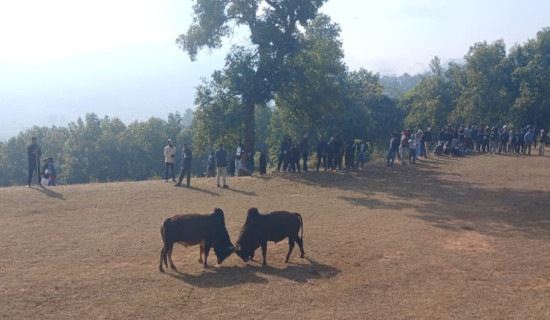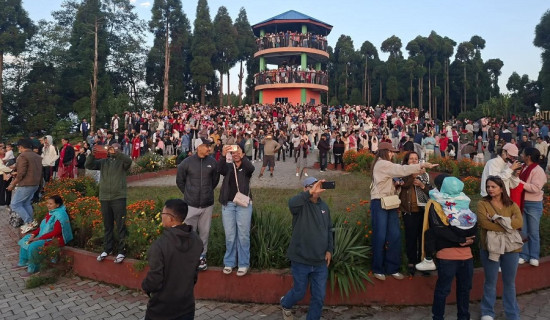- Thursday, 1 January 2026
Harnessing Nutrition For Growth
As the world is recovering from the global pandemic, our goal of ending hunger, food insecurity and malnutrition in all its forms by 2030 should be a priority agenda for actions. While agrifood systems remains highly vulnerable arising from climate change and economic contraction, it has profound impacts on delivering nutritious, safe and affordable diets for all. In this context, harvesting nutrition for growth remains a critical challenge. According to a recent report of Food and Agriculture Organisation (FAO), about 2.4 billion people, comprising relatively more women and people living in rural areas, did not have access to nutritious, safe and sufficient food all year round. Further, the evidence suggests that millions of children under five years of age continue to suffer from stunting, wasting, and overweight worldwide.
Globally, the prevalence of stunting among children under five years of age has declined steadily, from an estimated 33.0 per cent in 2000 to 22.3 per cent in 2022. More importantly, the prevalence of stunting and wasting was higher in rural areas, while overweight was slightly more prevalent in urban areas. Despite some progress in reducing child undernutrition, the world still faces a strong challenge to attain the 2030 target for low birthweight which is closely linked to the nutrition of women before and during pregnancy.
Food insecurity
Notable progress is seen on levels of exclusive breastfeeding for first six months of life worldwide. However, evidence suggests that food insecurity disproportionately affects women and people living in rural areas. Accessibility and affordability of healthy diets have been more critical to low-income households living in rural and urban areas. They are obviously disadvantaged to secure healthy diet in the families. In South Asia, the landscape of malnutrition is also alarming. According to a UNICEF report, about 64 million children in the region are suffering from severe food poverty. Their diets do not include the bare minimum of food groups they need to grow in their early years. Moreover, evidence shows that one in three children have stunted growth. One in seven children are wasted.
Over the years, Nepal has also gained encouraging progress in key nutrition indicators. According to Nepal Demographic Health Survey 2022, the stunting and wasting among children of under five years of age are 15 per cent and 8 per cent respectively. The underweight is still 19 per cent. Compared to the past decades, this is a significant decline in stunting and wasting. Clearly, we also notice significant variations in prevalence of stunting and wasting in the provinces. For example, stunting is 36 per cent in Karnali, which is very high compared to other provinces. Similarly, wasting is 16 per cent in Lumbini. In the urban areas, the prevalence of child overweight is on the rise. Unfortunately, the risk is increasing with the emerging trends of high consumption of processed foods at large. And this food culture is spreading to peri-urban and rural areas.
Considering the urgency of reducing malnutrition, Nepal is implementing Multi-Sector Nutrition Plan (MSNP) under the overall strategic guidance from National Planning Commission. Broadly, the MSNP aims to promote nutrition-specific and nutrition-sensitive interventions in close coordination with other sectors such as education, health, agriculture and livestock, food systems, water, sanitation and hygiene, women and children, and few more. The institutional capacity of multi-sector coordination committees needs to be further strengthened in facilitating participatory planning and implementation of nutrition-sensitive interventions at the local level.
Some of the noteworthy nutrition interventions include Maternal, Infant and Young Child Nutrition (MIYCN), growth monitoring and promotion, control and prevention of iodine and deficiency disorders, promotion of food-based dietary guideline, control and prevention of iron deficiency anaemia, and school health and nutrition activities. There are growing priorities for effective implementation of community-based nutrition sensitive interventions at local level. The effective implementation of MSNP at local level is easier said than done. Limited human and financial resources constrain the ability of local governments in prioritising nutrition and food security agenda for multi-sector actions.
Additional challenges
Over the years, there are critical programmatic as well as service coverage gaps in the rural and remote areas where poor and socially marginalised populations face a number of social, cultural, economic, geographic, political and psychological challenges while accessing quality health and nutrition services in the health facilities and communities. In the federal context, there are additional challenges while implementing the MSNP across the country. In remote communities, there is still limited access to basic health care, food and nutrition services, poor access to water, sanitation and hygiene, low level of public awareness in health and nutrition among children, adolescents and youth. Social protection provisions for children and women need to be further strengthened for ensuring effective delivery of quality health and nutrition services during disaster and health emergencies.
For better nutrition and livelihoods of children and women, the role of development partners such as UNICEF, WHO, WFP, FAO, USAID, Helen Keller International, civil society, indigenous communities, and political leaders is crucial to provide technical support in effective implementation of the MSNP at all levels. More efforts from civil society are needed to scale up nutrition-sensitive interventions in an integrated approach. Moreover, there are ample opportunities to harness traditional food systems for better nutrition outcomes at local level. We need to broaden diversity in food and promote consumption of indigenous, locally adapted nutritious food in the communities. The local initiatives not only promote exclusive breastfeeding, healthy nutrition behaviours and diets for women and children in particular, but also greatly help in harvesting nutrition for growth at large.
(PhD in global health, Bhandari writes on health and development issues.)









-original-thumb.jpg)






